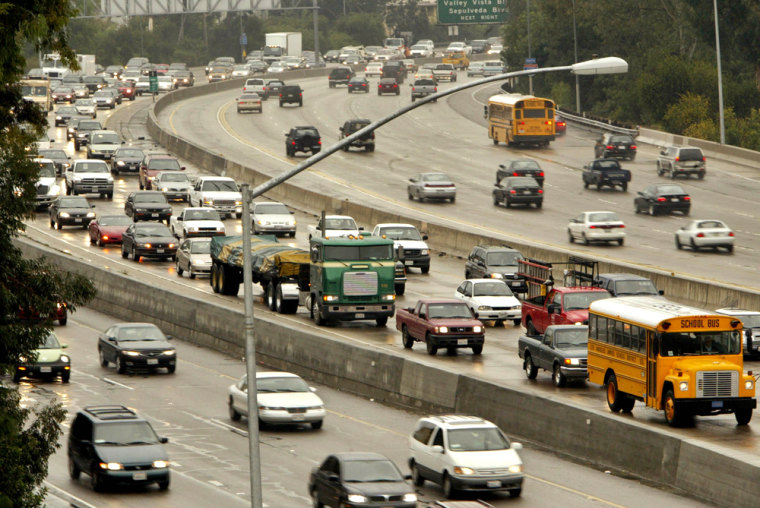Drivers in Phoenix spend nearly 23 million hours a year combined sitting in traffic at the notorious Mini-Stack interchange.
Chicago motorists spend even more — 25.2 million hours — at the dreaded Circle Interchange.
Los Angeles drivers on the Ventura Freeway at the I-405 interchange top them all, annually enduring 27 million hours of traffic delays.
Those figures were calculated for a study released Thursday that said the number of major U.S. traffic chokepoints — places where highways cannot handle all the cars — rose 40 percent over five years.
There were 233 major bottlenecks in 2002, compared with 167 in 1997, said the study by Cambridge Systematics Inc., a Cambridge, Mass., company that specializes in transportation planning.
The report also said seven of the 18 previous top chokepoints had disappeared as a result of construction projects.
Lobbying for roads
The report was commissioned by the American Highway Users Alliance, a group that is lobbying Congress this year for a bigger highway-mass transit bill than President Bush wants. The current six-year highway spending bill expires at the end of this month.
“For the sake of public safety, an improved environment and a better quality of life, Congress should act quickly and dedicate significant funding to fixing these chokepoints,” said Diane Steed, president of the group, which represents automakers, oil, trucking and construction companies and state highway departments.
Bottlenecks caused by too many cars on too little road are to blame for about half of all traffic jams, said the report. Traffic accidents, work zones, bad weather and poor signal timing account for the rest.
Now the worst bottleneck, but previously No. 5, is the Ventura Freeway at Interstate 405 in Los Angeles, where California highway officials estimate traffic is jammed for nearly five hours every weekday afternoon. Four of the 10 worst bottlenecks are in the Los Angeles area.
Behind the Ventura Freeway, the worst bottlenecks were the Interstate 610 West-Interstate 10 interchange in Houston; Chicago’s I-90/94-I-290 interchange; the I-10 interchange with state roads 51 and 202 in Phoenix; and the San Diego Freeway-I-10 interchange in Los Angeles.
Why N.Y. missing from worst?
The study defined a bottleneck as a place where drivers experience at least 700,000 hours of delay every year. No bridges or toll roads were included, eliminating some sites in the New York City area from the list. The study ranked them according to the total time that drivers spent backed up at the point of congestion.
No longer ranked among the worst traffic hot spots are interchanges in Boston, Albuquerque, N.M., Chicago, Houston, Denver and two around Washington, D.C.
Boston’s $14.6 billion “Big Dig” eased traffic snarls at the northbound intersection of U.S. Highway 1 and Interstate 93. The southbound lanes were completed in December, too late for the report to measure its impact.
The highway group argued that the cost of highway projects is worth the benefits. For example, it cost $293 million to reconstruct the “Big I” interchange of Interstates 25 and 40 in Albuquerque, but the total hours of annual delay dropped from 16 million in 1997 to 1.1 million in 2002 as a result.
“When you look at some of these projects the costs are colossal, the numbers will scare you, but the benefits are also colossal,” said Alan Pisarski, author of “Commuting in America.”
Congressional path
Last week, the Senate passed by a 76-21 vote a $318 billion highway-mass transit bill covering the next six years. Bush proposed spending only $256 billion and his advisers have said they will recommend he veto any bill much larger than that.
In the House, there is some support for a $375 billion bill that would be funded with an increase in gasoline taxes. Supporters acknowledge that opposition from House Republican leaders and the White House will probably force that price tag down.
Pisarski said Congress is having difficulty financing highway projects because the 18.4 cents a gallon federal tax on gasoline has not risen since the early 1990s.
Highway projects also have gotten more expensive because they now have to minimize their impact on the environment and neighborhoods they traverse, he said. Giant sound barriers, for example, weren’t around in the 1950s.
Details from the congestion report are online at www.highways.org.
